Acclaimed Travel Photographer Shares 7 Must-Take Expedition Cruises
![]()
Today, interest in adventure travel is at an all-time high. Most modern day travelers design their travel itineraries based on the exciting experiences that it will provide. For photographers, this is especially true, as portfolio worthy images often come from adventurous experiences. For over 50 years, Lindblad Expeditions has been at the forefront of adventure travel. From the Arctic to Antarctica and points in between, OM SYSTEM Ambassador and photographer Ralph Lee Hopkins has traveled the world documenting the experiences that await Lindblad Expeditions’ guests. Hopkins, who is the Lindblad Expeditions Director of Photography, shares with PetaPixel seven of his favorite expedition locations to capture incredible photographs.
Full disclosure: This article was brought to you by Lindblad Expeditions
“After more than three decades of traveling on expedition ships to the world’s wildest places, I’m often asked where my favorite destination is,” Hopkins says. “To be honest, I don’t have a favorite. Each expedition destination is unique and offers widely differing experiences.”
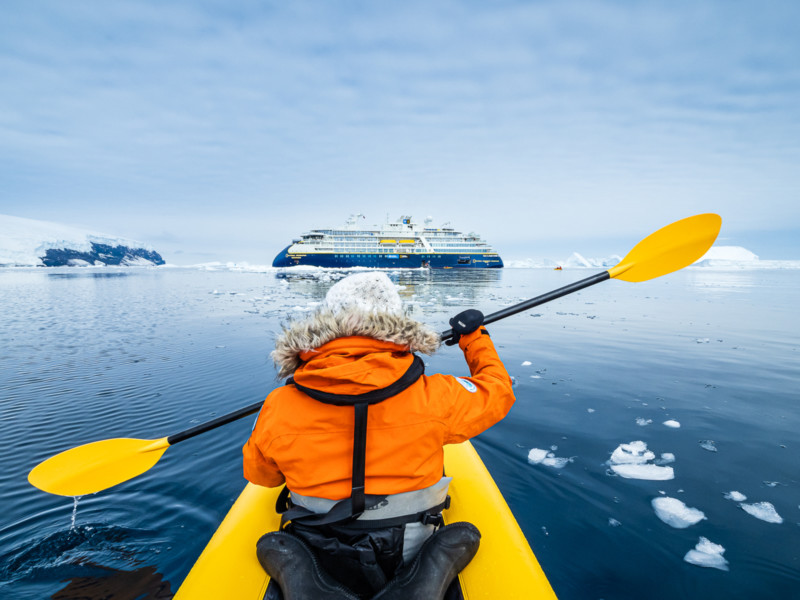
“The polar bears that live in the arctic are my favorite animals to photograph, yet, I’m also addicted to the sculpted ice forms and penguins in Antarctica,” he continues. “There is the incredible experience of being among brown bears in Alaska as they chase after salmon right in front of you. Perhaps nothing is more incredible than being in the presence of thousands of penguins in South Georgia or having a close encounter with a California gray whale in Baja. Travel and photography are my passion and these meaningful experiences are the rewards.”
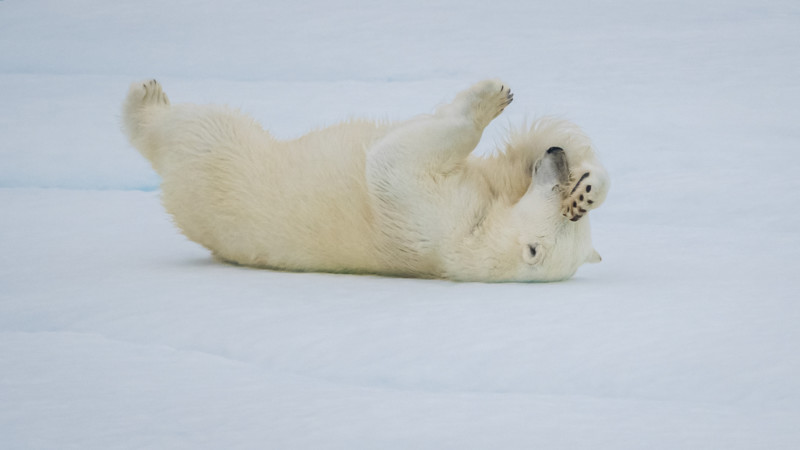
“In all of my years of being the Lindblad Expeditions Director of Photography, these are just a few of my favorite expedition locations. No matter how many times I have visited them, I always find something unique and incredible to focus my OM SYSTEM OM-1 camera on.”
At a Glance
Antarctica, South Georgia, and the Falkland Islands
Antarctica is a dream location for countless landscape and wildlife photographers, and for good reason. Colonies consisting of tens of thousands of penguins bask casually on the shorelines in front of dramatic, jagged mountain peaks.
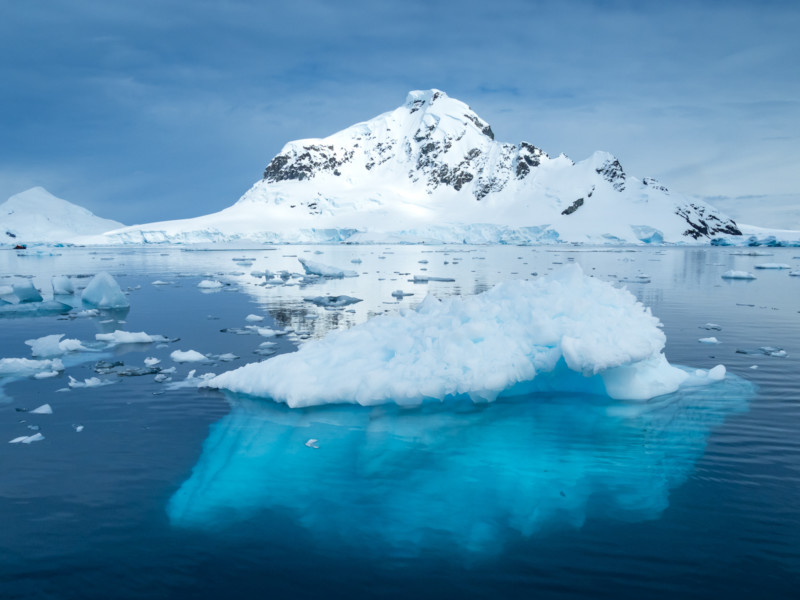
A favorite expedition of Hopkins is the itinerary to the Antarctic Peninsula, South Georgia, and the Falkland Islands. The 24-day expedition onboard the National Geographic Endurance provides endless opportunities to photograph massive colonies of king penguins, adorable fur seals, dramatic landscapes, and even the occasional total solar eclipse.
![]()
The first stop on the voyage is the Antarctic Peninsula, where the 128-passenger ship will anchor in the frigid waters offshore before ferrying its passengers to land on 12-person Zodiac boats.
“Antarctica blows your mind every time you visit,” Hopkins states. “The first time you go, you go for the penguins. When you return, you are going for the ice. Ice becomes an obsession. The polar explorers named it ‘Polar Fever,’ and I get it every time I lay eyes on the ice-filled landscapes of the Antarctic Peninsula.”
Hopkins notes that the landing sites that the guests visit is where the penguins usually congregate en masse, and that isn’t a coincidence. These sites are where the wind blows off the harshest aspects of the landscape, and penguins can get ashore to set up their colonies.
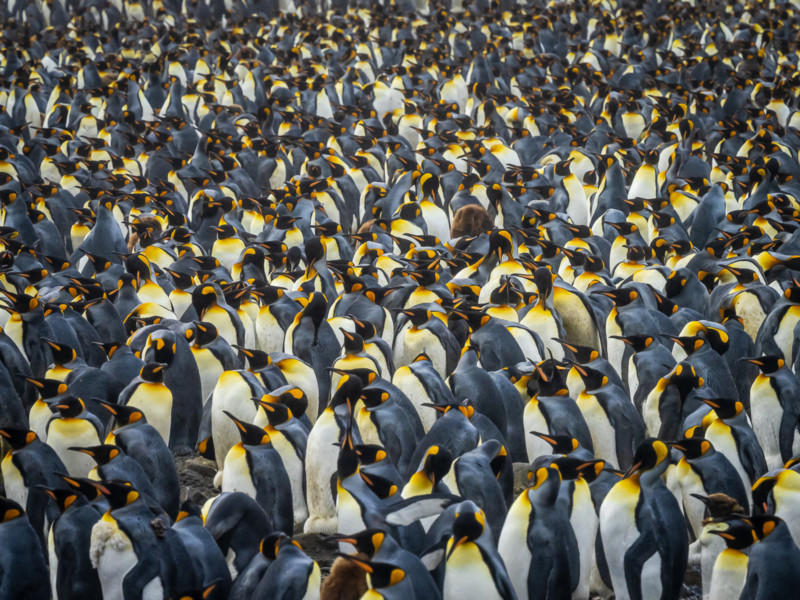
“Feeling humbled and dwarfed by the scale of the scenery, Antarctica is overwhelming.” he explains. With a photo in every direction, where do you start? When I’m overwhelmed I recall the photographer’s mantra – Light, Composition, Moment. Look for the light, work the composition, wait for the moment.”
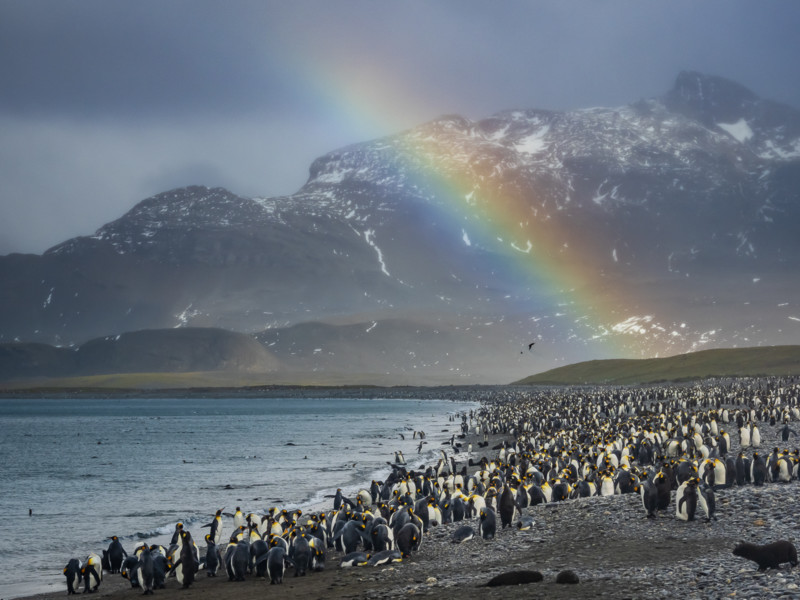
The same can be said for South Georgia, a mountainous shard rafted away from the South American Andes by plate tectonics about halfway between the southeast coastline of Argentina and Antarctica, but 1,200 miles to the east. Huge colonies of King penguins line South Georgia’s expansive beaches and elephant and fur seals patrol the coastlines.
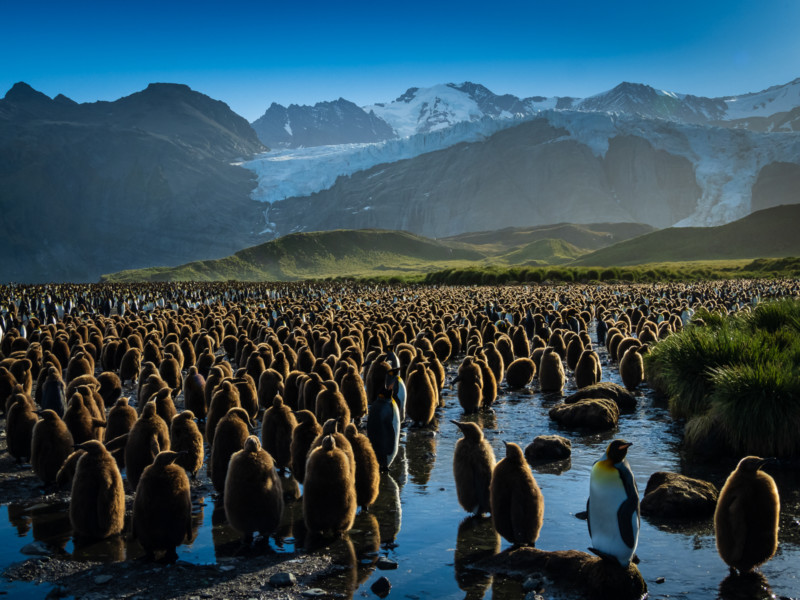
“Thousands of penguins will be casually going about their lives just meters away,” Hopkins says. “For me, focusing on my visual storytelling has helped make sense of the chaos. First, I think about how I can set the scene using my OM-1 with my wide angle zoom lens, the M.ZUIKO ED 12-100MM F4.0 IS PRO. This usually involves a bigger scene that incorporates both the wildlife and the landscapes. Often, part of the story is the National Geographic Endurance itself. Not only is it a very photogenic ship, but it also adds a sense of adventure to the scene.”
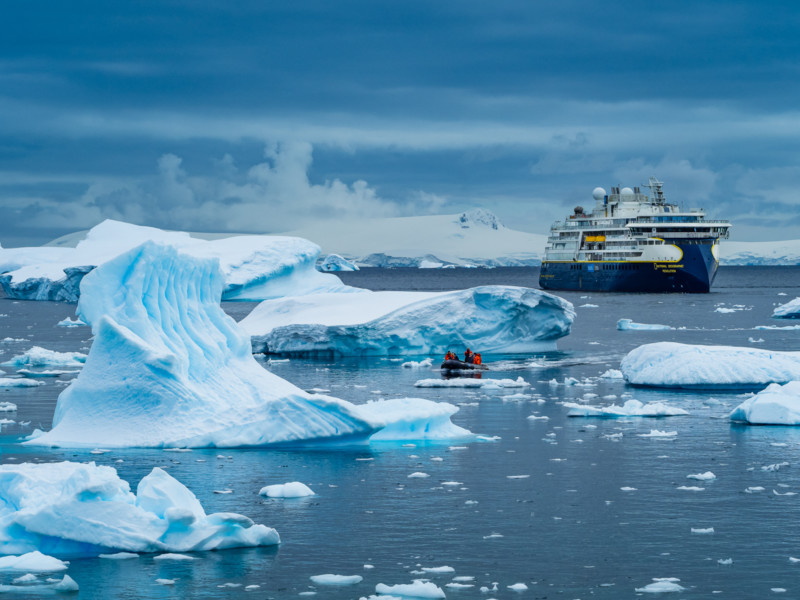
“Next, I will focus on the details,” Hopkins describes. “The secret is to isolate. I find the penguins that seem to be most active and focus my attention on them. Then I can either isolate them against the stunning icy mountain backdrops, or even against the thousands of other penguins. King Penguins do a necking behavior where they’re preening each other. They wrap their necks so you have the symmetry of their colors coming together, and it photographs incredibly.”
![]()
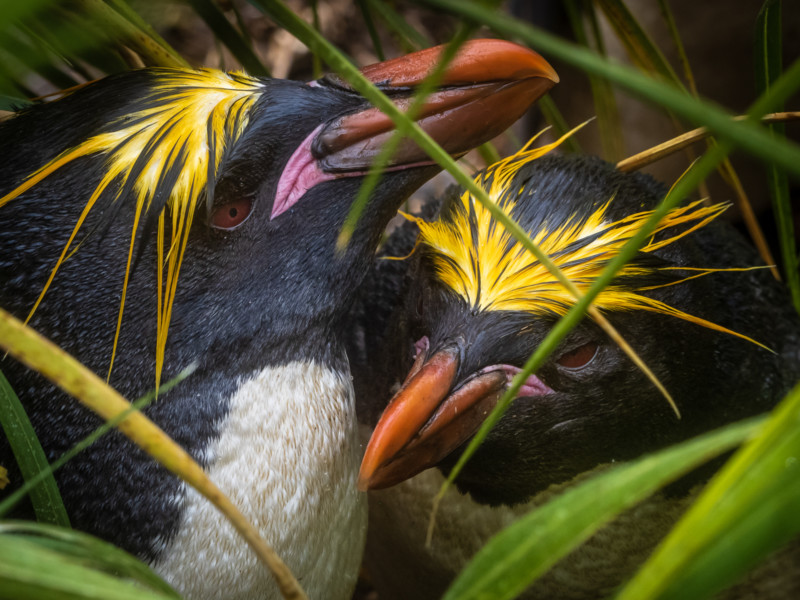
“I find getting at eye level with the penguins really adds a dynamic look to the photos,” he continues. “I also like to tell the story of the harsh life that the penguins live, so I photograph them as they jump into the sea to fish. When they return to shore, they have to make it through this gauntlet of fur seals that, on occasion, will hunt the penguins.”
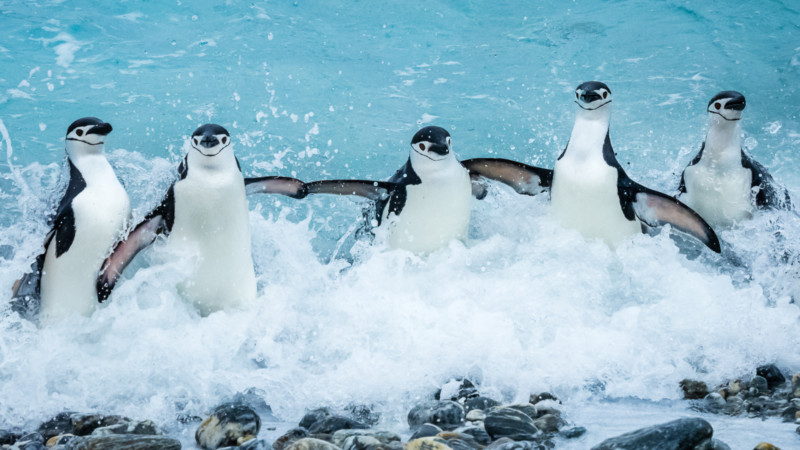
Hopkins says that as the guest photographers are overwhelmed by the wildlife and landscapes, they often forget an important part of the story that they are trying to tell: the people. “If it’s all just animals that you are photographing, and you aren’t including fellow adventurers in your shots, there’s an element missing,” he describes. “A person can help tell the story, as they not only provide scale, but they also make your viewers imagine themselves in the scene themself.” Luckily for the photographers, Lindblad Expeditions provides all of its guests traveling to Antarctica a complimentary bright orange parka jacket, which stands out vibrantly against the icy landscape.
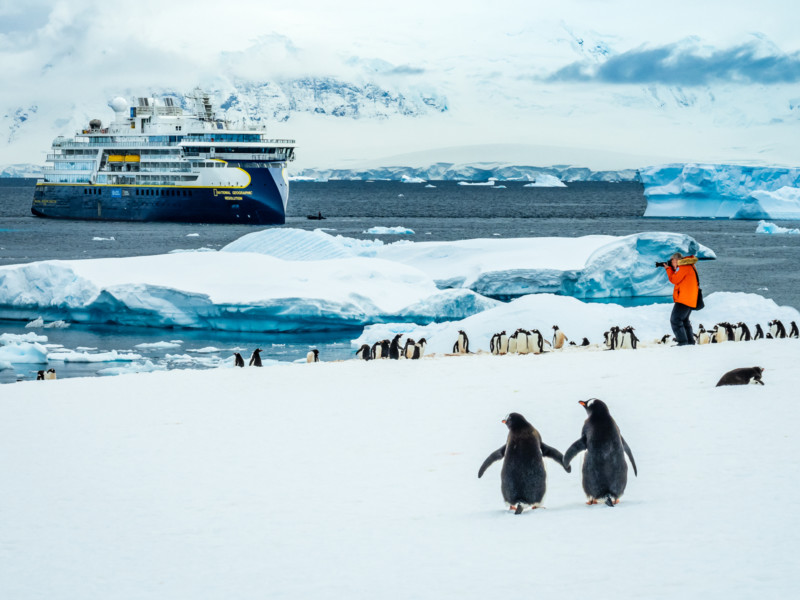
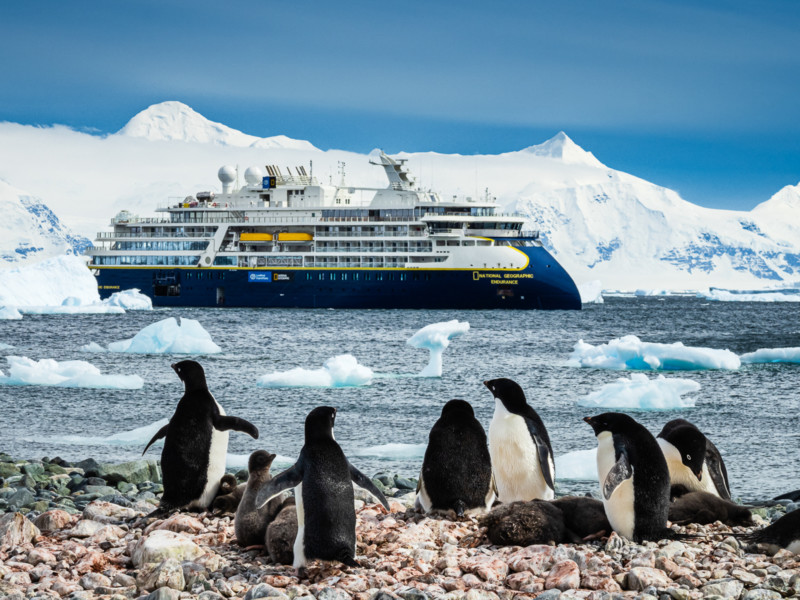
“After I have all of my detail shots and the Zodiac is getting ready to bring us back to the ship, I always look for a dramatic closing photo to my story,” Hopkins concludes. “There is never a shortage of these closing photo opportunities in Antarctica, so it’s just a matter of how you want to leave your viewers wanting more.”
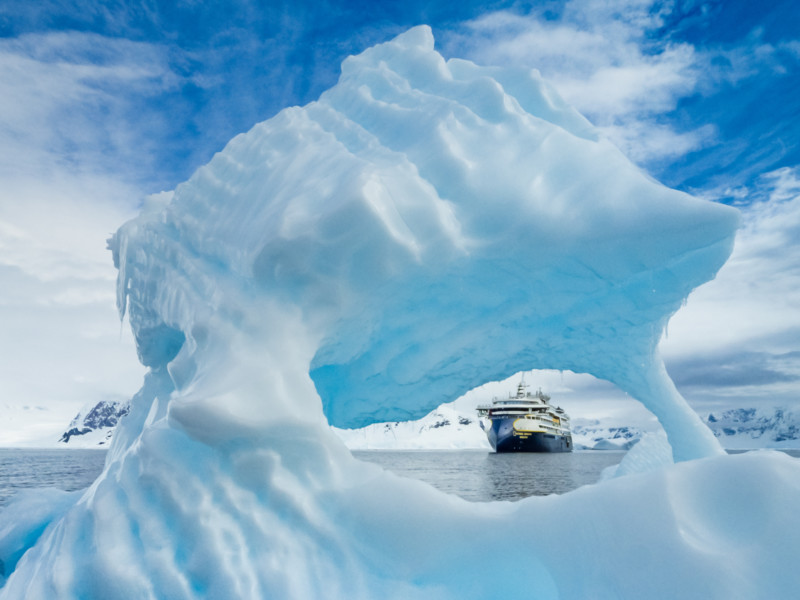
The last location on the expedition is the remote Falkland Islands. The windswept and subdued landscapes of the Falklands are home to thousands of seabirds, including albatross, imperial shags, rockhopper and king penguins.

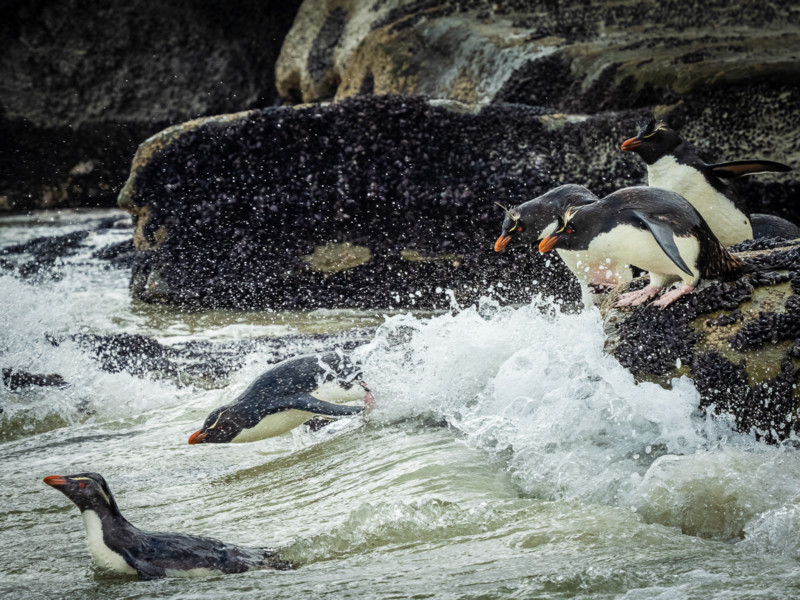
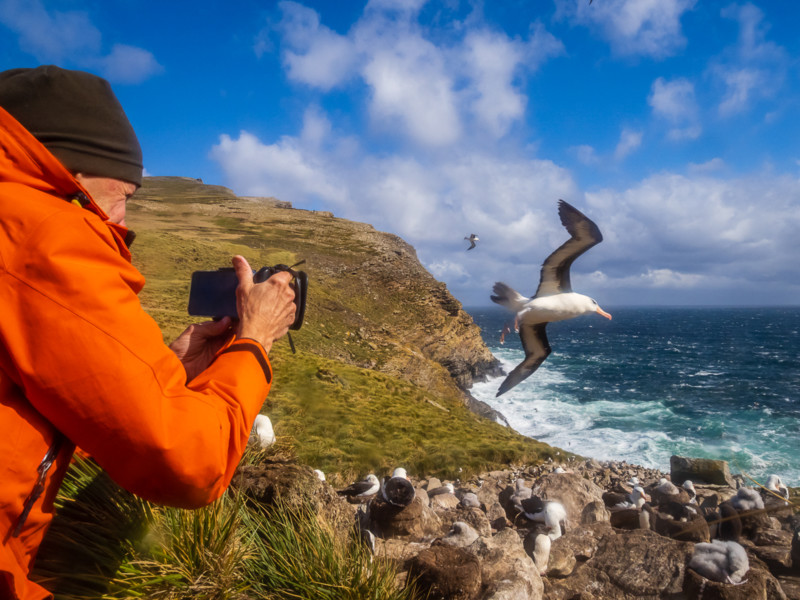
While challenging, Hopkins says that photographing the Antarctic Peninsula, South Georgia, and the Falkland Islands is a once in a lifetime experience. “It truly feels like one of the last unspoiled places on the planet. If you are looking for adventure, beautiful landscapes, unique wildlife, and portfolio worthy images, this is the expedition for you.”
Svalbard
Reaching above 80˚ degrees north and less than 600 miles from the North Pole, the mountainous Archipelago of Svalbard is a photographer’s dream. Icy mountains form photogenic backdrops behind the polar bears, walrus and seals that roam the frigid landscapes. This 11-day springtime expedition allows photographers to witness polar bears returning to the spring hunting grounds to coincide with the seals pupping. The state of the art National Geographic Resolution, a fully-stabilized, ice class vessel (PC5 Category A), enables adventurous guests to go where few have before.
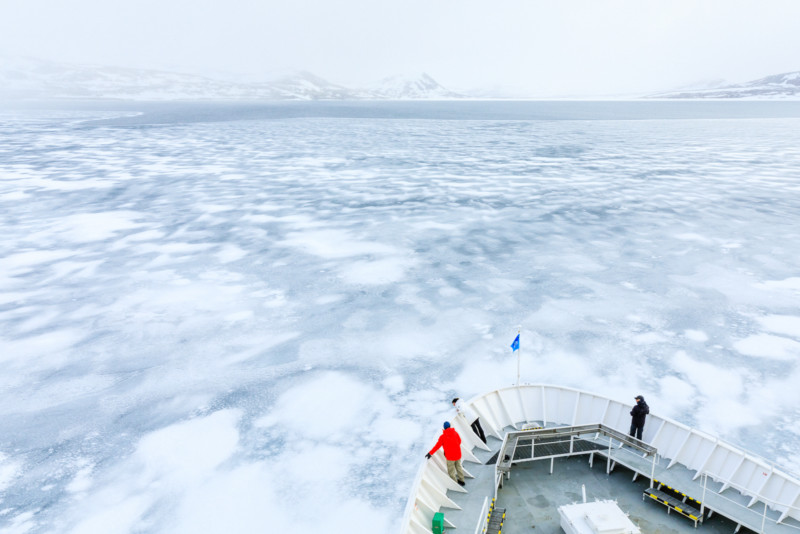
“Most people come to Svalbard to see polar bears, but in my opinion, the ice is just as photogenic. The patterns that the ice creates is extraordinary, and you are surrounded by these beautiful blue icebergs. Even if you somehow never see a Polar Bear your entire trip, the ice itself will make it a trip to remember.”
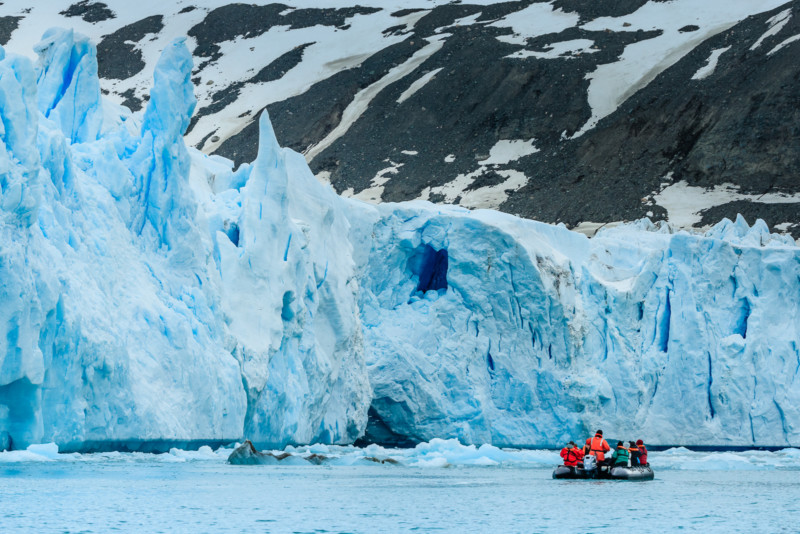
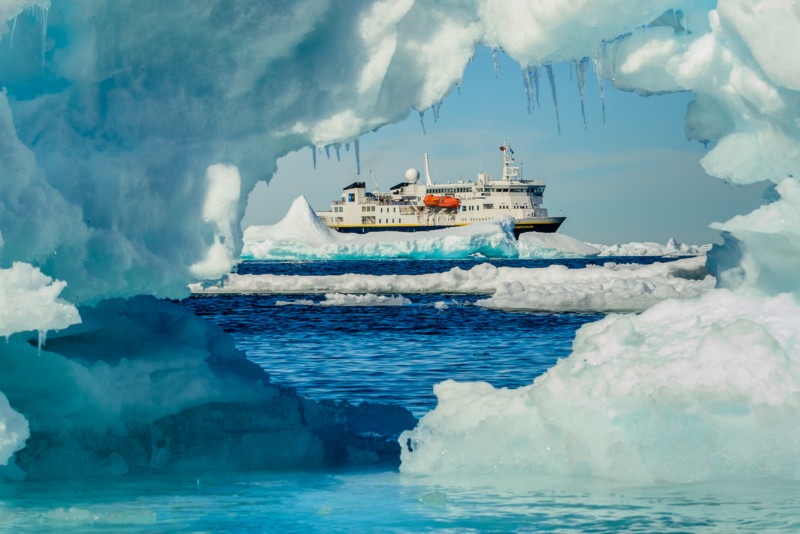
Hopkins explains that the most common mistake photographers make when they see their first polar bear is to exclusively shoot tight. While getting the detailed telephoto shots are a must, he says that the most dramatic storytelling comes from including the unique landscapes that surround the polar bears.

“I believe the best storytelling shots are where you have the animal in the spectacular landscape, patterned ice or blue water pools of Svalbard,” he says. “My go-to lens there is the M.Zuiko ED 150-400mm F4.5 TC 1.25x IS PRO. Having that focal range is important, as there are places where the landscapes seemingly go on for miles. Even from onboard the ship, I have taken some incredible photos at 800mm that show the polar bears in their habitat. I will photograph polar bears from the top deck, which allows me to get the patterns on the ice in frame. When the bears approach, I will go to a lower deck and shoot wider, as the bears are close enough that you can also get patterns on the ice while not having the bears be the dominant subject. Bears often will test the ice edge, pushing down to see if it’s firm enough to make the jump between ice flows. I prepare for the jump by pre-focusing on the ice edge then use the OM-1’s Pro Capture Mode or burst mode to photograph the sequence.”
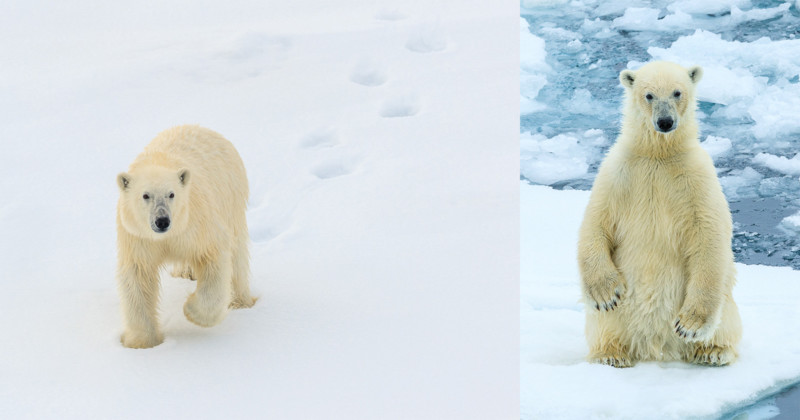
The challenge of photographing polar bears, says Hopkins, is that they are not everywhere like penguins. “The search for polar bears is part of the magic of an expedition to the arctic. The challenge is high, but the rewards are incredible as you are telling a story of a fascinating wild animal in one of the harshest environments on the planet.”
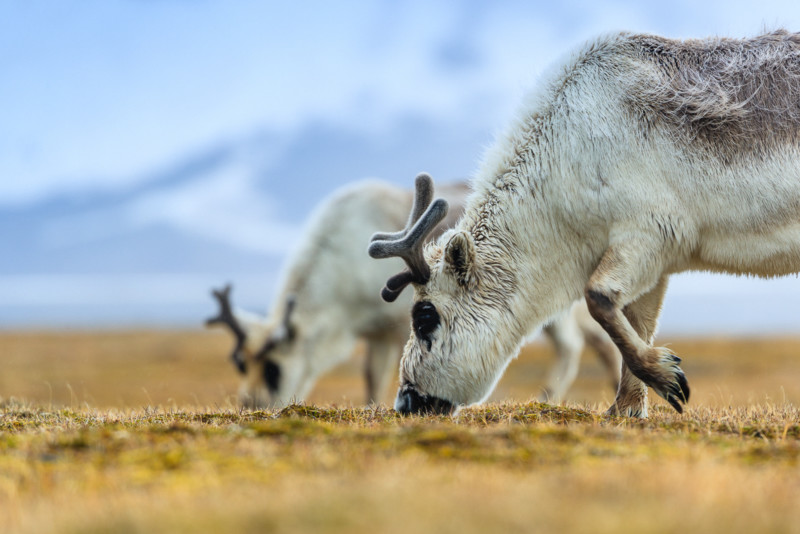
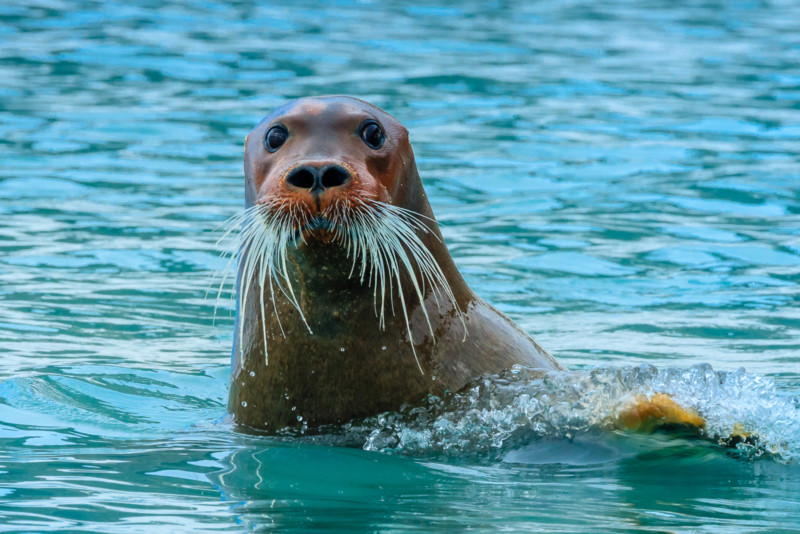
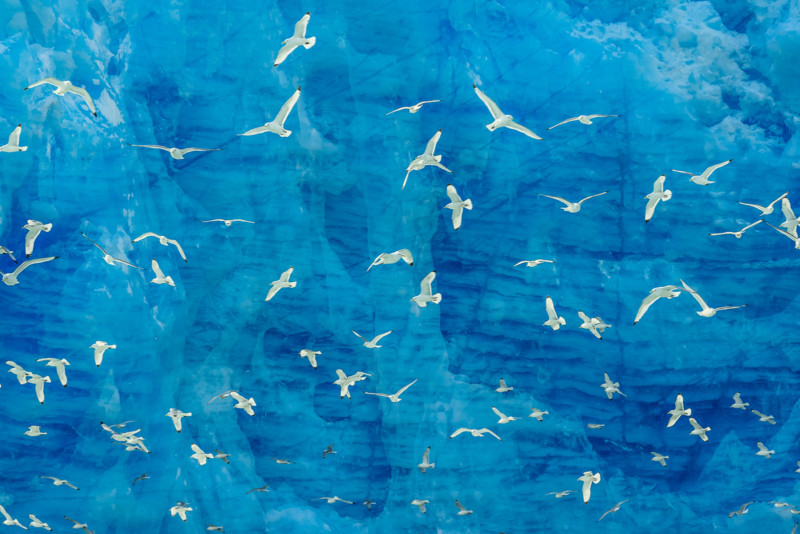
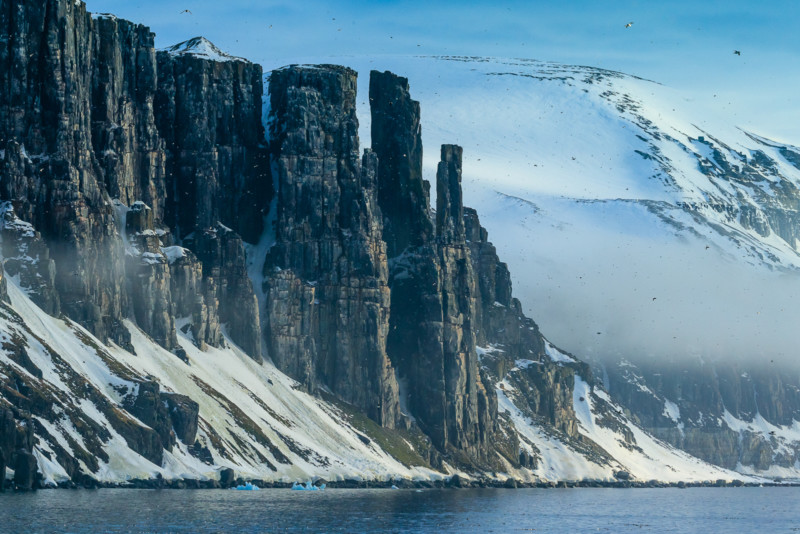
Rarely visited a decade ago, Svalbard has had a small boom in tourism over the last few years. However, due to its remote location and challenging environment, only the most dedicated will make it to the icy Norwegian archipelago. Those who do, however, will experience one of the wildest locations in the world.
Baja
The peninsula of Baja, California stretches south of the US border, protecting the Sea of Cortez. Only a short plane flight from the United States, the peninsula is where the desert meets the sea. In Hopkin’s opinion, it is one of the best places in the world to photograph whales and dolphins.
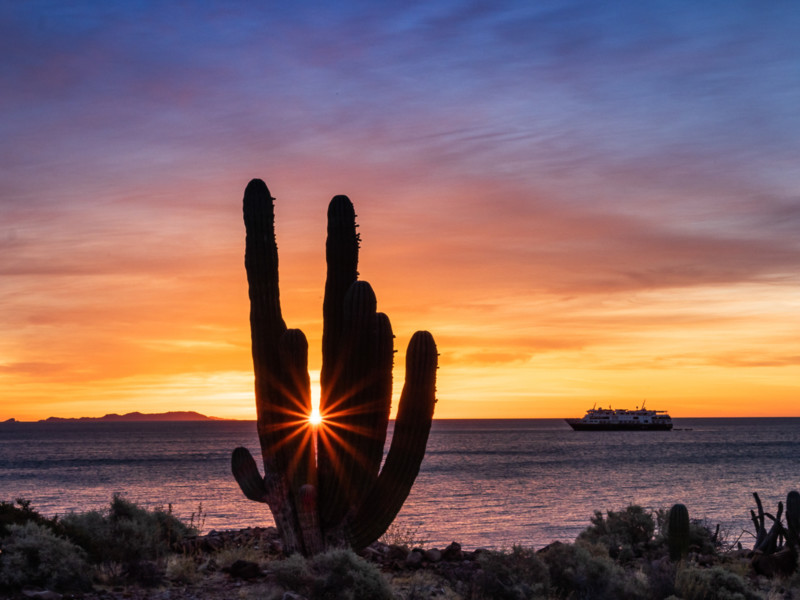
The Baja expedition has a special meaning for Hopkins, as it is the first voyage that he worked on with Lindblad Expeditions 33 years ago. On that first trip, he was amazed by the number of California gray whales that were constantly visible. From January to March, the California gray whales pause their migrations to birth and nurse their calves in the lagoons on the Pacific side of Baja, giving photographers close encounters just meters away.
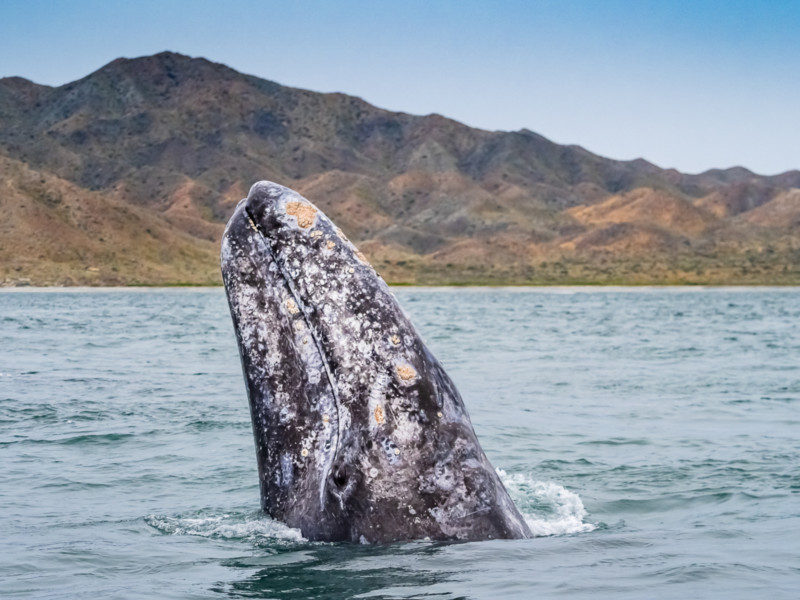
Even though the waters of Baja see over a third of all of the species of whales in the world, Hopkins describes the challenge that photographers face when they encounter whales in the warm waters. Even though they are seemingly everywhere, 90% of action takes place underwater. However, whales will exhibit surface behavior and will often jump or breach above the ocean surface before landing with a huge splash.
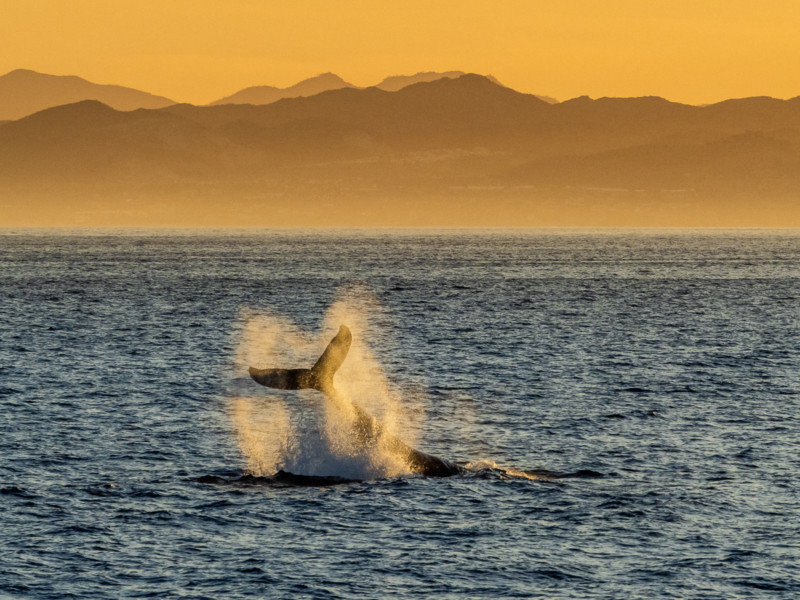
For whale and dolphin surface breaches, Hopkins recommends a very fast shutter speed, as the action lasts mere seconds. “The dolphins are very playful and they like to bow ride with the ship. They will often leap out of the water, so it’s important to be ready with a fast shutter speed and continuous autofocus for those brief moments of action.”
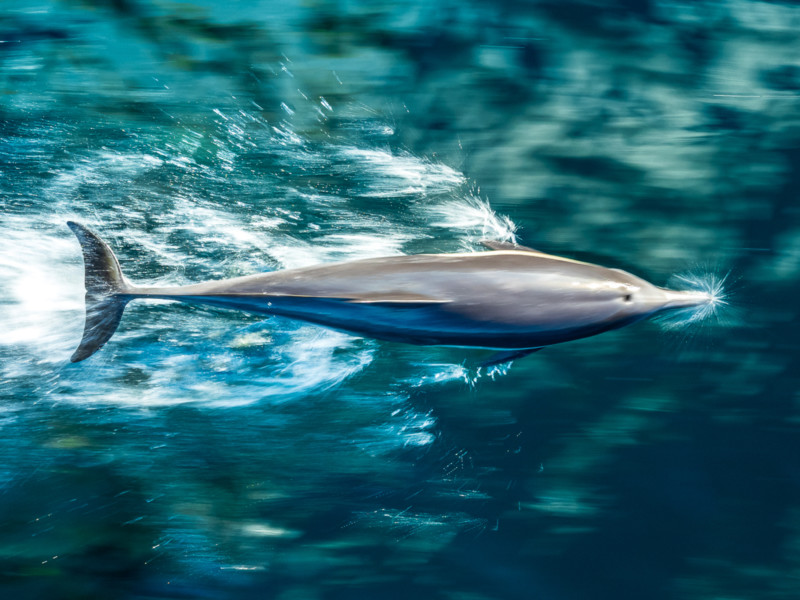
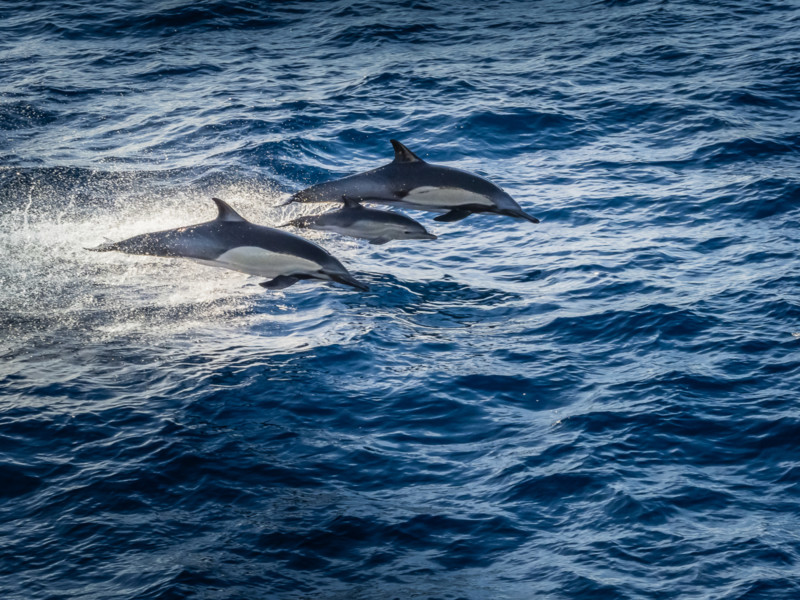
The Baja expedition isn’t just popular for its marine life experiences, however. Throughout the 10-day adventure, the National Geographic Venture will take its guests onshore to stunning sand dune beaches before visiting the famous ocean arch known as Land’s End by Cabo San Lucas. In addition, this region has some of the Americas’ darkest night skies for astrophotography.
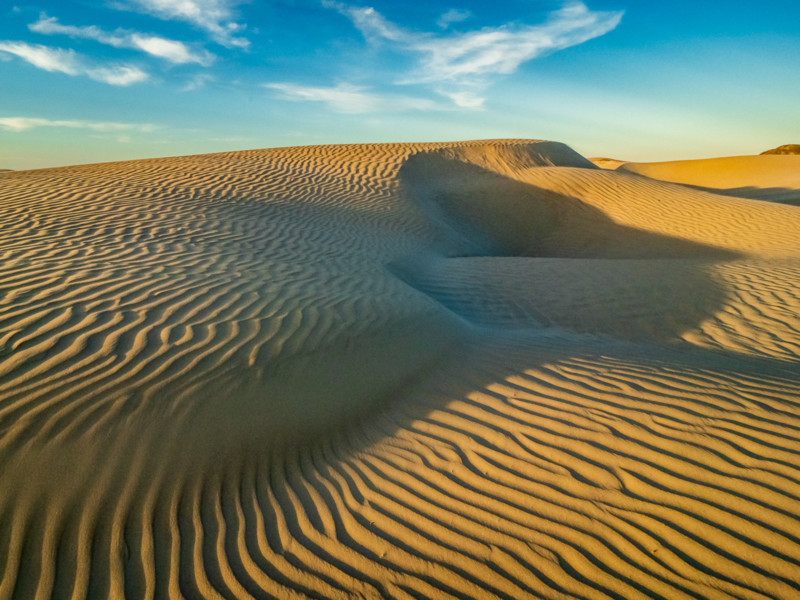
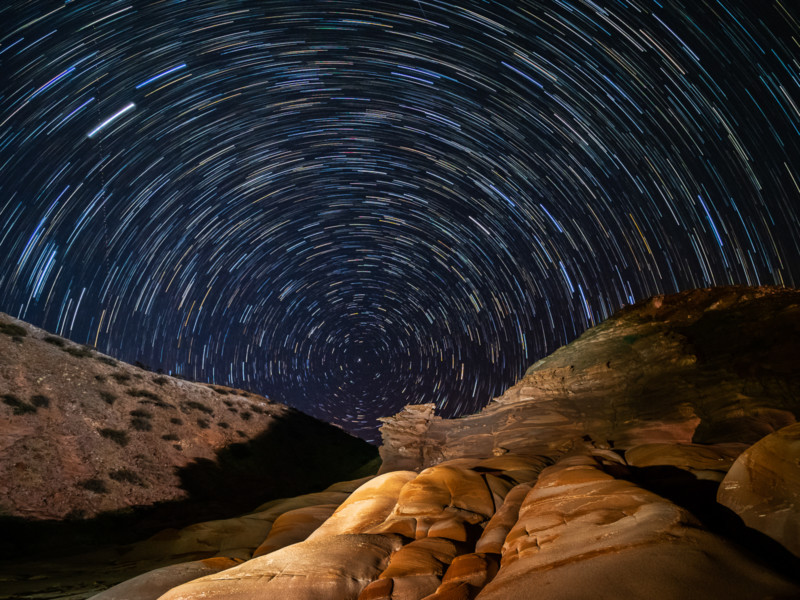
“The amount of stars in the night sky in Baja is startling. This is my favorite expedition to use the OM-1’s Live Composite mode. The camera can focus on the stars, so the results are much sharper than manually focusing on infinity. I place my OM-1 on a tripod and take my first shot, and once Live Composite is initiated, the camera is only looking for new light sources and will add those to the final composited image. This works great for capturing light painting, fireworks or star trails without overexposing any part of the scene. It has changed my long exposure photography, and there are few better locations to capture the night sky than Baja.”
Galápagos Islands
The Galápagos Islands are a popular destination for most wildlife photographers, thanks to its unique wildlife and stunning scenery. The Galápagos is known as a “living museum and showcase of evolution,” where Charles Darwin’s theory of evolution by natural selection was formed following his visit in 1835. Hopkins says that if photographing unique and diverse wildlife from just meters away is your goal, you would be hard pressed to find a better expedition than the Galápagos Islands.
![]()
![]()
“The Galápagos will spoil you,” says Hopkins. “There is such an abundance of wildlife it can be overwhelming.” Hopkins warns, however, that just because the animals are abundant and the scenery gorgeous, it’s not always easy to photograph in the Galápagos.
![]()
“Tropical light can be harsh and full of contrast, and the desert landscape creates challenging backgrounds. You could stand and shoot down on the animals to show their proximity to the trail, but for more intimate and artistic portraits, getting close is not the answer.”
![]()
Hopkins says that he prefers to back off with a middle range zoom lens, like the M.Zuiko ED 40-150mm f2.8 PRO, so he can create a shallow depth of field. “Although I will experiment with wide angle portraits showing the animals’ habitat, getting low at eye level will help simplify the background,” he describes. “Another challenge is finding ways to isolate the wildlife. On the other hand, learning how to tell the story of how the wildlife interacts with each other always creates dynamic images. I love the way the iguanas lay on top of each other for warmth. Instead of trying to isolate one iguana, I will look for the most dramatic looking group and use shallow depth of field to create a compelling image.”
![]()
With all the wildlife that the Galápagos is home to, perhaps none is more well known than the blue-footed boobie. The boobies get their vibrant colored feet from their diet. The healthier their diet is, the more vibrant their blue feet are. The males will show off their feet in a mating dance to attract a mate. As Hopkins describes, it’s not uncommon to see three blue-footed boobies standing side by side, trying to out-impress each other for a chance to mate.
![]()
![]()
Along with Alaska, the Galápagos expeditions are popular for first time adventure enthusiasts. Its relatively close proximity to the United States and interest in wildlife and Charles Darwin leads many people to sign up for the expedition.
![]()
“There is only one place in the world like the Galápagos Islands, which is why almost 98% of the surface area is protected National Park land. It’s one of the few places that I could go to a thousand times and always find something unique to photograph.”
Iceland
Iceland is one of the most sought after destinations for landscape photographers, as the European island nation has arguably the most stunning waterfalls, beaches, and landscapes in the world.
![]()
While many visit Iceland for its scenery, Hopkins says that the adorable puffins that inhabit Grímsey Island might be the most enjoyable photography opportunity during the 11-day expedition that circumvents the entire island.
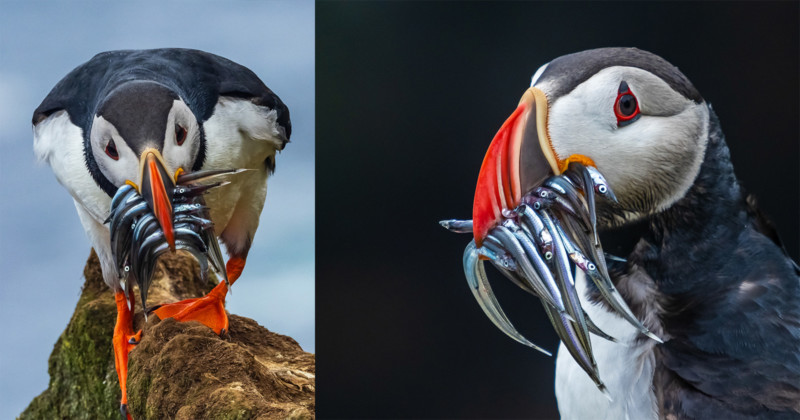
“It is a timeless pursuit to sit along the top of a puffin-filled cliff and observe their antics,” he says. “Like flying footballs, they are not graceful in the air, exhibiting very little glide when they land. Photographing birds in flight is perhaps the most challenging skill for photographers to master. Modern autofocus and the OM-1’s incredible bird tracking raises the success rate considerably, but it still isn’t easy. Especially in windy conditions, which Iceland is famous for. The puffins will almost stall in mid-air as they awkwardly crash land on the cliff. It’s hilarious to watch and incredibly fun to document.”
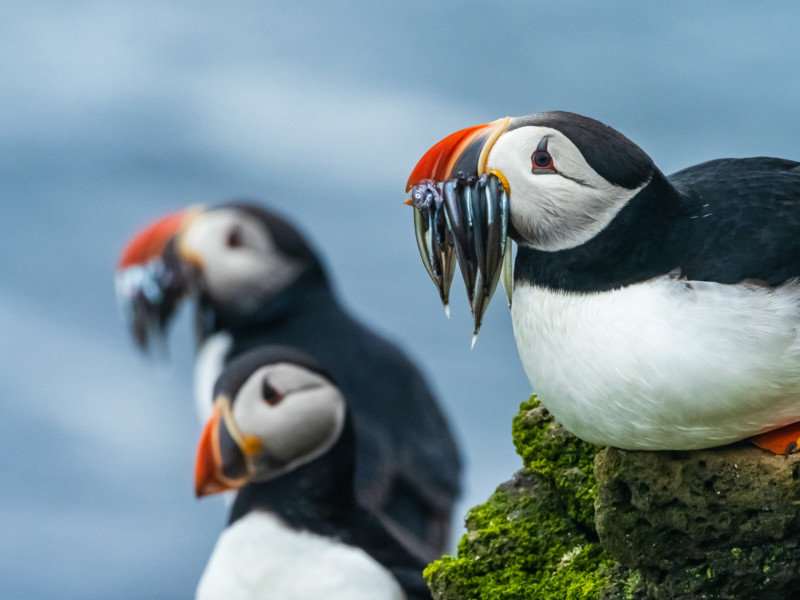
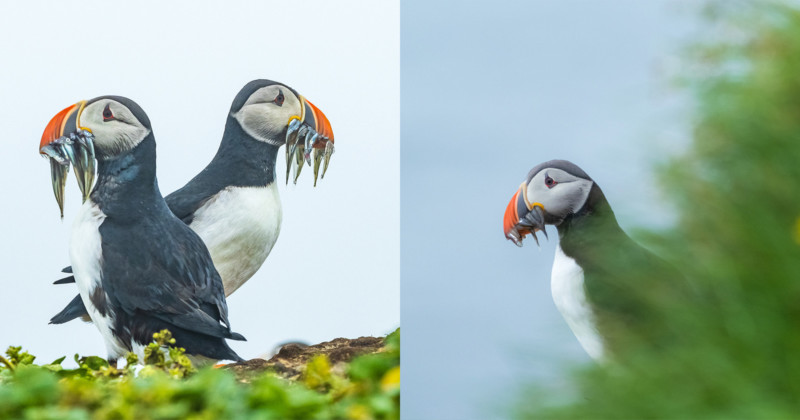
As a trained geologist, Hopkins is fascinated with the unique geology of the island. Iceland is a volcanic hotspot, and the otherworldly landscapes are proof of its turbulent history and present day eruptions. During the day, guests will visit some of Iceland’s most iconic locations, as well as secluded valleys and remote waterfalls.
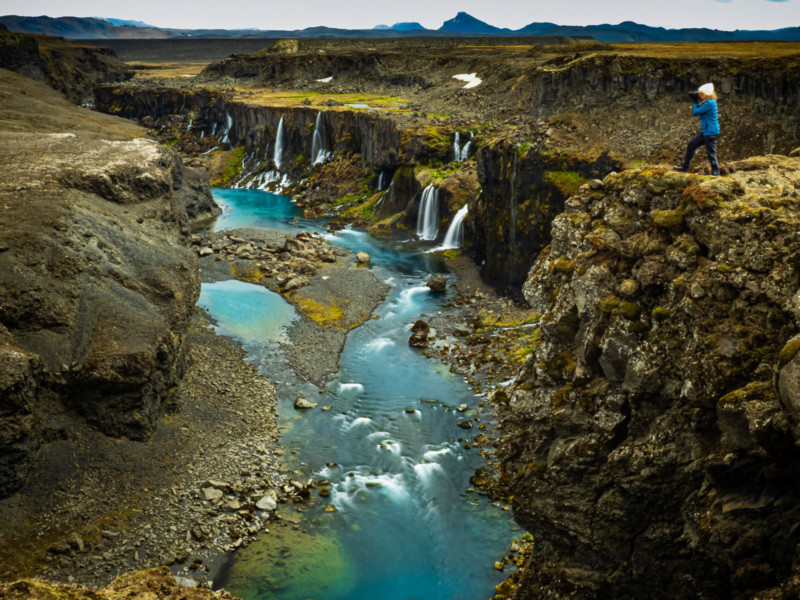
It is estimated that there are some 10,000 waterfalls throughout the country. Hopkins says that the best way to tell the story of these powerful waterfalls is to use a neutral density filter to slow down the fast water. For most cameras, this is accomplished using an external neutral density filter that goes over the front of the lens. Hopkins, however, uses an intelligent feature on his OM-1 called Live ND mode.
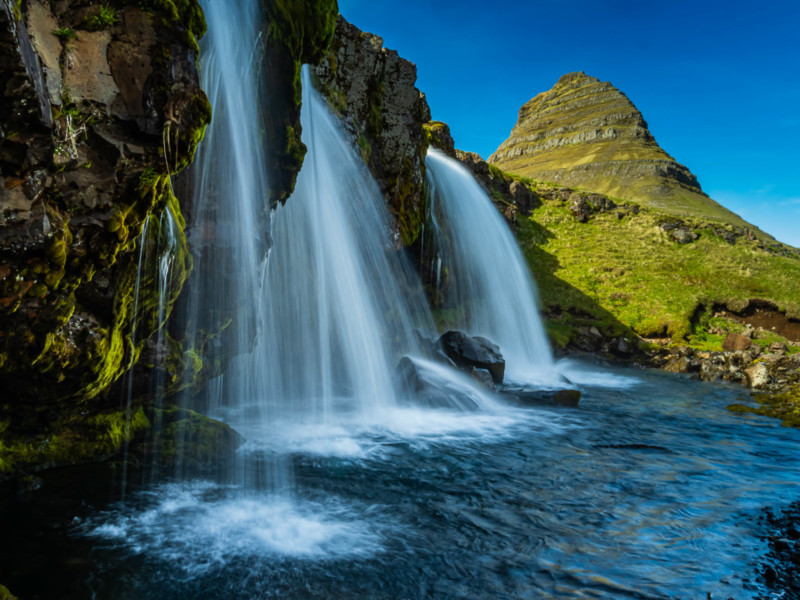
“Using Live ND mode, I tell the camera how long of an exposure time I want, and the OM-1 computationally creates the image by combining multiple exposures. The best part about using the Live ND Mode with the OM-1’s image stabilization is that I can shoot these photos handheld and expect sharp results.”
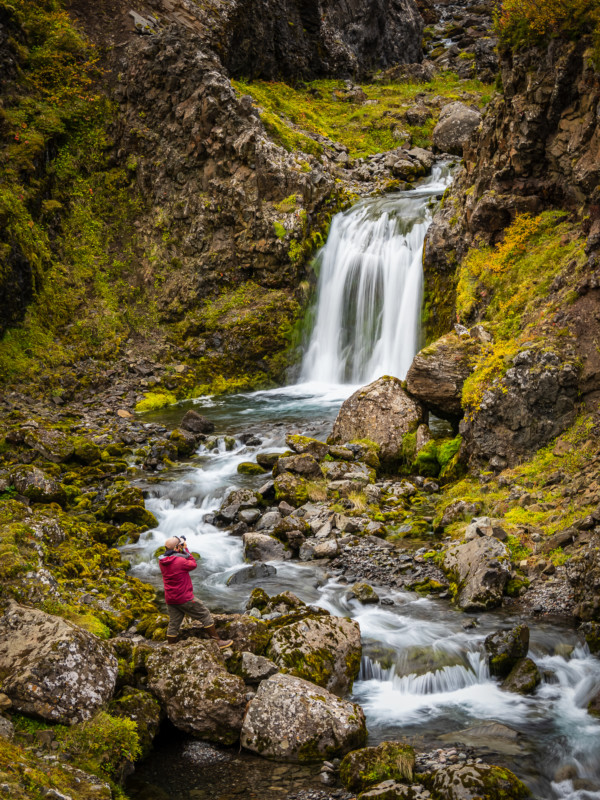
Since the A Circumnavigation of Iceland expedition runs in the month of July, photography guests are treated to Iceland’s famous midnight sun. Being that the island lies just outside of the Arctic Circle, the summer months bring almost 24 hours of sunlight, with colorful skies lasting hours in the transition between sunset and sunrise.
“I tell photographers on our summer expeditions to Iceland to not expect a normal sleep schedule,” Hopkins states. “The best light at this time of year is around midnight, so the later you photograph the incredible Icelandic landscapes, the better.”
Canadian Arctic and Greenland
Lindblad Expeditions has over 50 years of experience guiding adventure seeking photographers to the most rugged and remote locations on earth. Perhaps none are more remote than the Canadian Arctic and Greenland.

Each August, Lindblad Expeditions runs the 25-day Gateway to the Northwest Passage: Greenland & Canada expedition. Guests board the National Geographic Endurance in Kangerlussuaq, Greenland before sailing into dramatic fjords, narrow straits, and stunning bays. Photographers are also treated to wildlife encounters with polar bears, walrus, seals, bowhead whales, white beluga whales, and the unicorns of the north, the elusive narwhals. Along the way, guests will also get a look into the daily lives of the Inuit communities in remote villages who have lived off the land for hundreds of years.
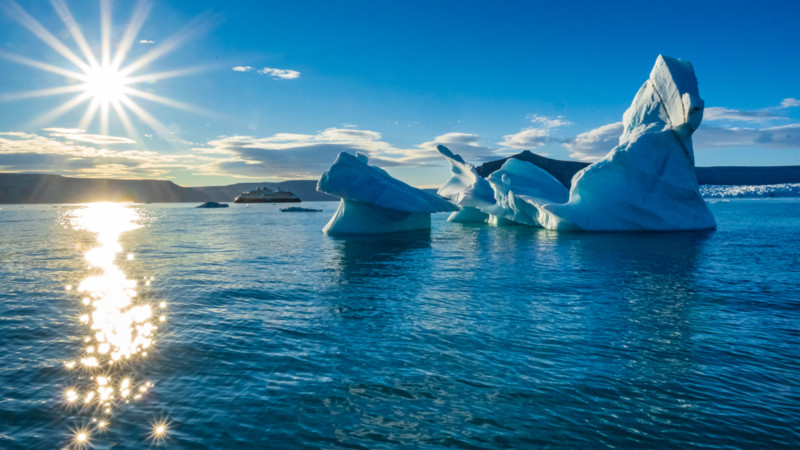
“Baffin Island and the Canadian archipelago is a truly stunning and vast frozen landscape in the far north,” Hopkins says. “On Baffin Island, the ship cruises through this dramatic glacially carved landscape that still has an abundance of glaciers. The deep fjords along Baffin Island expose contorted ancient rocks almost 2 billion years old. It is also a great place to photograph the Arctic wildlife. On sporadic occasions, we might even see the very elusive, rarely seen narwhals. The Canadian Arctic, like Svalbard, is a phenomenal place to tell the story of the arctic by framing your wildlife photos in the ice-filled landscapes.”
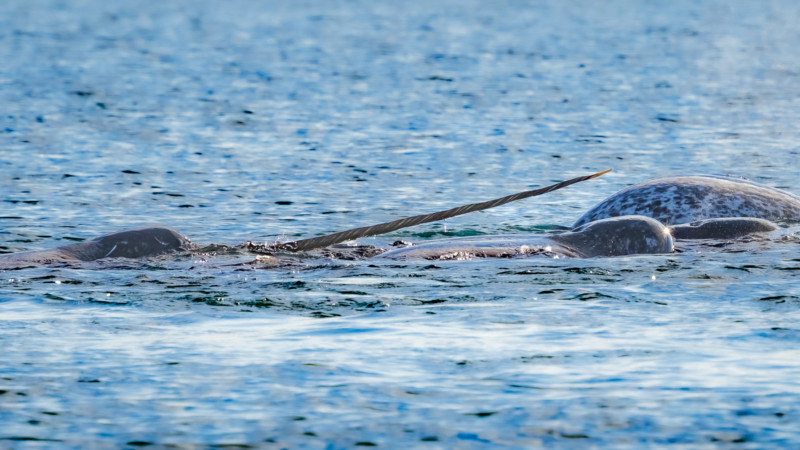

Depending on the condition of the ice, it is possible for the expedition to reach Ellesmere and other islands in the arctic wilderness, which are at 80˚ north. Few people ever reach this far north, so Hopkins realizes how incredible the experience can be.
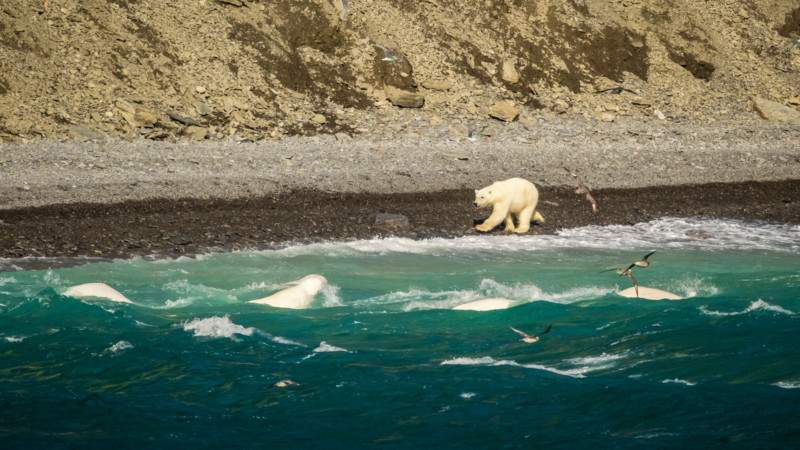
“The Canadian Arctic and Greenland is truly an expedition,” Hopkins describes. “In the arctic, we can’t guarantee that you will even see one polar bear. The chances are high, but polar bears are elusive and can be hard to spot. The naturalists on the National Geographic Endurance are some of the best we have, and if the bears are there, they will find them. I prefer these harder to find wildlife encounters, as the reward for finally capturing those photos you have dreamed of is euphoric.”
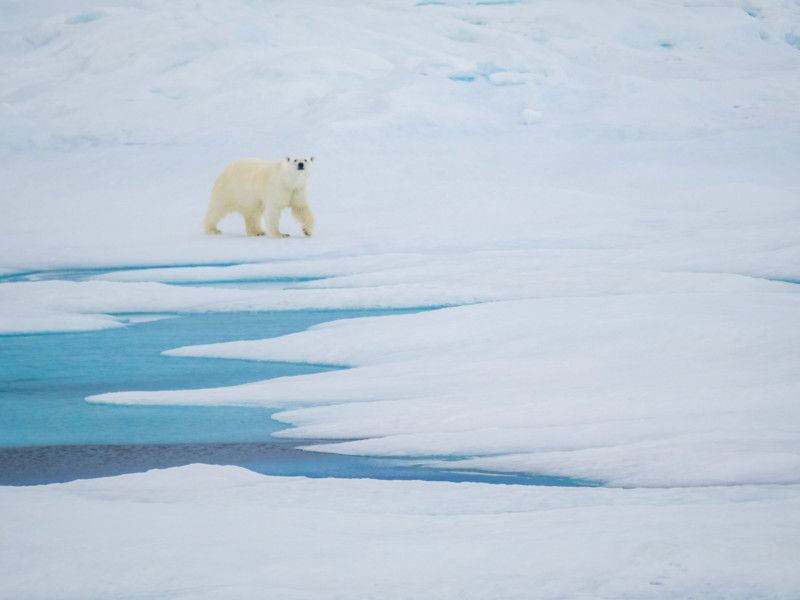
Hopkins explains that while every wildlife encounter is meaningful, the Canadian Arctic’s unique landscape makes polar bear encounters even more incredible.
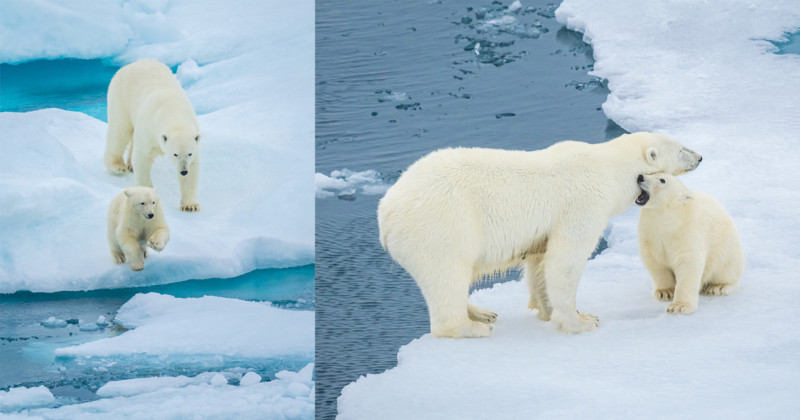
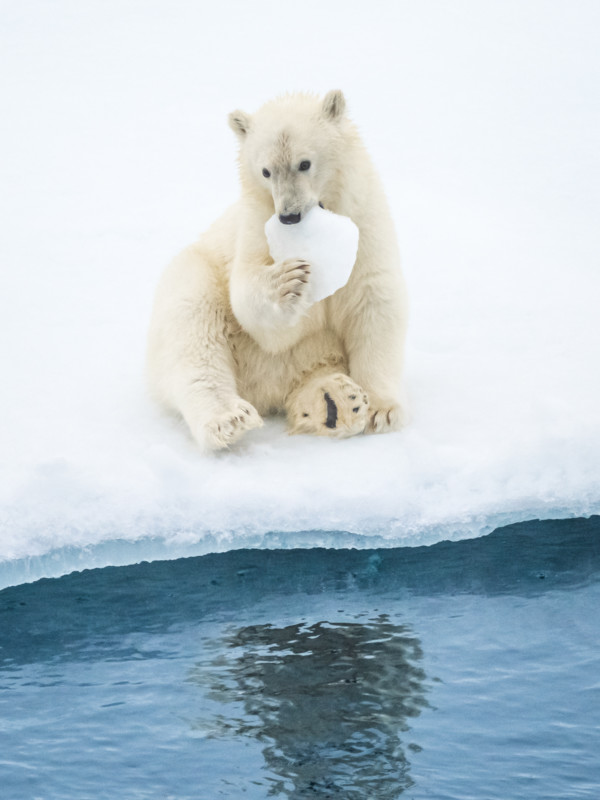
“In other places, you might see more polar bears, but for me, it’s about the quality of the sightings,” he says. “For example, we found a polar bear mother and cub that were jumping over pools and between ice flows as the mother encouraged the cub to jump with her. After watching the pair navigate the ice maze, they came to rest about 100 yards from the ship, where the mother nursed the cub. Afterwards, the cub stood up and got frisky while moving to the edge to play with a piece of ice. This was another reminder that no matter how many times I am lucky enough to photograph a wild animal, there are always new and interesting behaviors you can capture.”
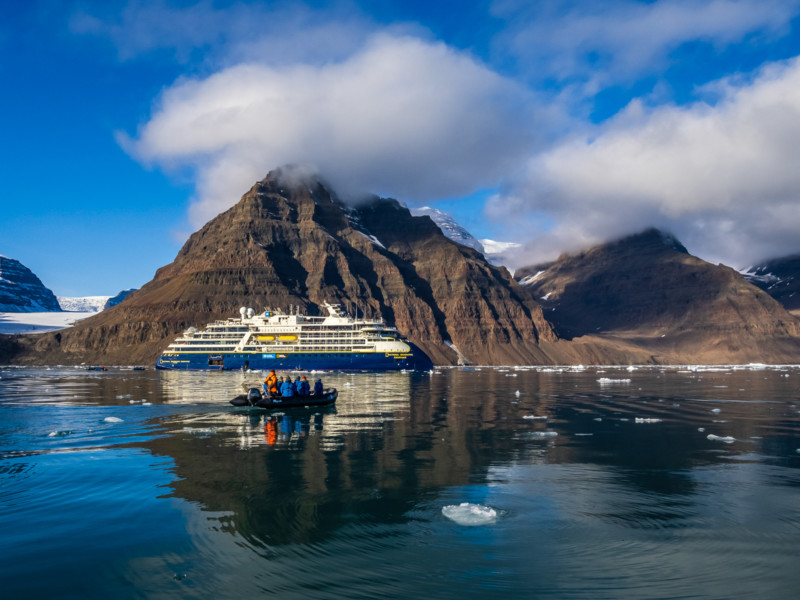
After visiting the Canadian Arctic and the islands at 80˚ north, the expedition returns to the western shoreline of Greenland. Hopkins points out that Greenland’s melting ice is on the forefront of the climate change discussion, and Lindblad Expedition holds a series of informative presentations to educate guests about the important issue. Lindblad Expeditions is 100% carbon neutral and the company has raised more than $19 million since 1997 to protect the ocean, conserve wildlife, bolster local communities, and enable meaningful scientific research.
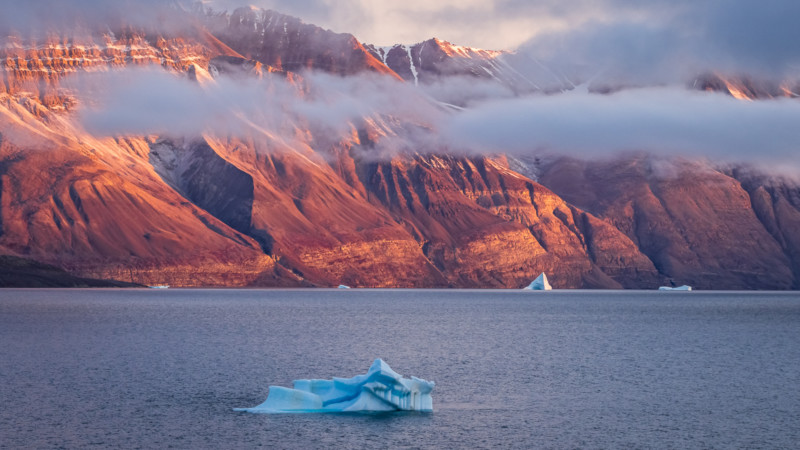
“80% of Greenland is under ice, but it’s disappearing faster than ever, so I try to tell stories that not only show how remarkable of a place it is, but also how fragile it is as well,” Hopkins states. “The fjords of Northeast Greenland National Park rival only Antarctica for their scale. Rifting in the North Atlantic separating Greenland from Svalbard and Norway has exposed rocks carved by the glaciers during the ice ages of the past two million years. The rocks look like a swirl marble fudge cake in the fjord wall and are juxtaposed with icebergs in the foreground, which is my dream shot as an ice-loving geologist. The fjords of Greenland are unlike any other in the world.”
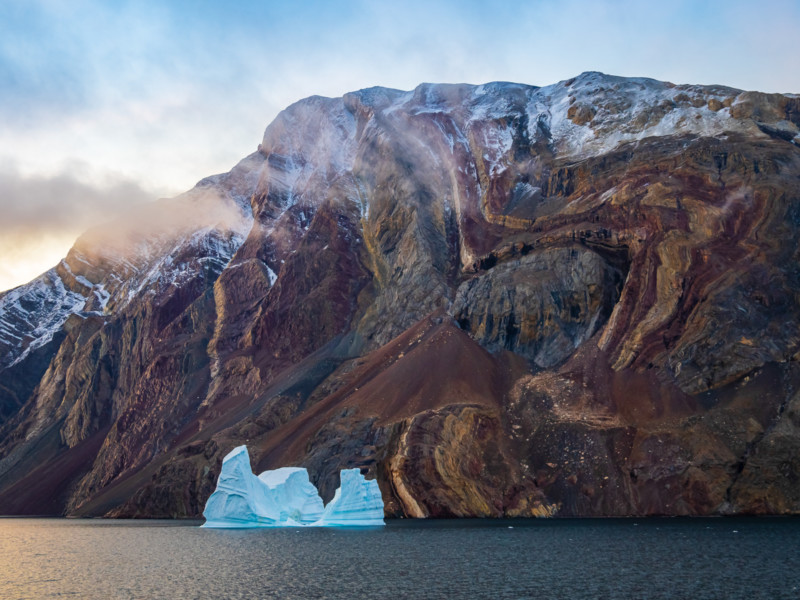
As if polar bears, rare whales, massive glaciers and stunning fjords weren’t enough, the Canadian Arctic and Greenland is also a prime location to see the Northern Lights. This is especially true in August and September while onboard the East Greenland: Wild Shores of the High Arctic expedition. Hopkin’s advice to those planning on joining the 20-day expedition? “Stay up late and get up early.”
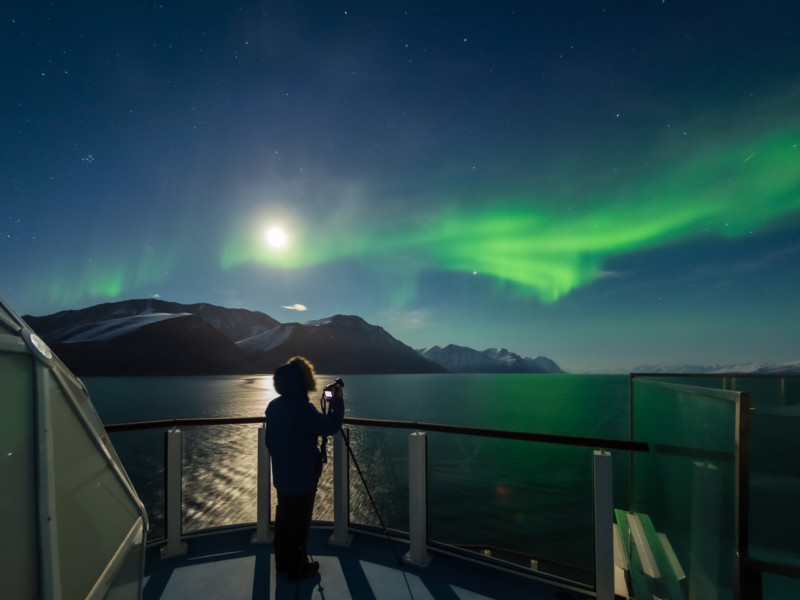
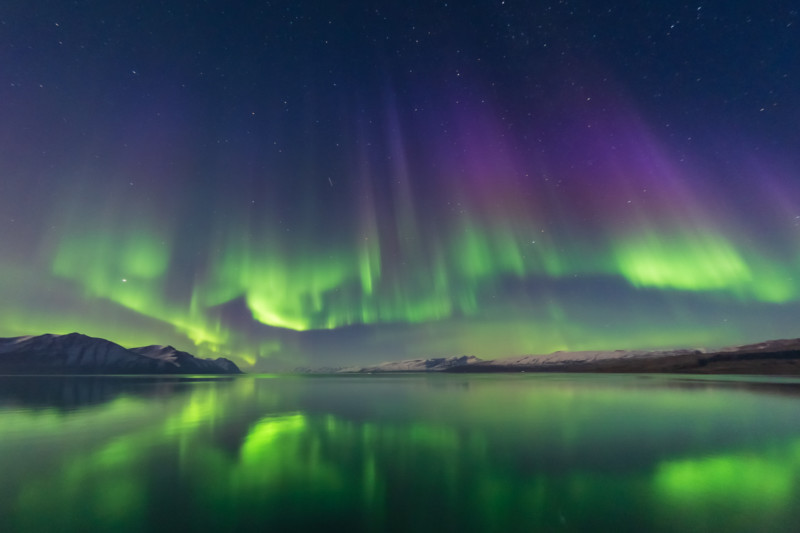
“Between the midnight sun and the northern lights, Greenland, much like Iceland, has incredible action after bed time. All photographers know that these moments are fleeting, so I don’t miss a chance to photograph them when I can. I often find myself out on the ship’s deck at 2am witnessing these magical moments. Sleep is optional in the far north.”
Alaska
With over 40% of Alaska’s 365 million acres being federally protected, the Last Frontier is one of the most untouched locations in the world. “Alaska truly is a one-of-a-kind destination that never disappoints,” Hopkins says. “Yes there will be harsh weather, which I fully embrace as it makes for dramatic images of clouds and mist clinging to the giant spruce and cedar trees in the temperate rainforest along coastal southeast Alaska. The land is so diverse and brimming with wildlife, you really never know what you are going to get on an Alaskan expedition, but you know whatever it is, it’s going to be incredible.”
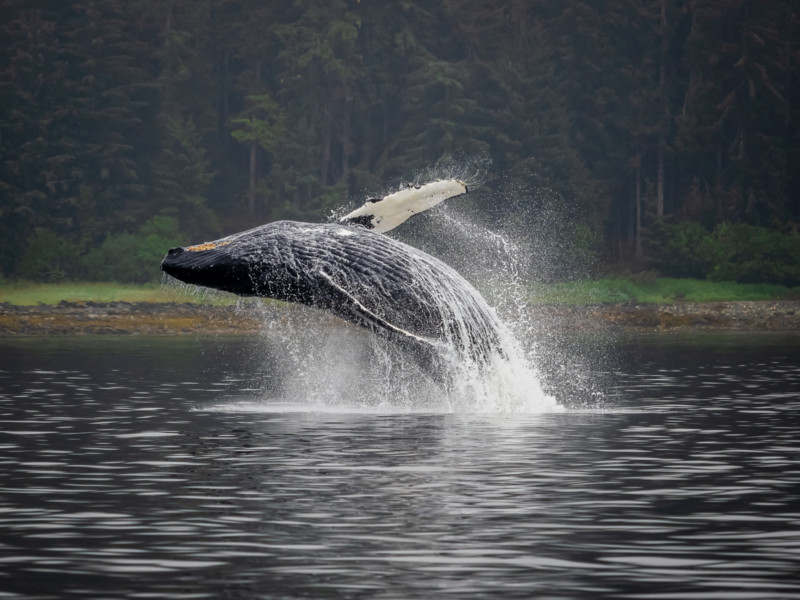

The first animal that attracts photographers to Alaska is bears. During the early summer months, shortly after they awaken from hibernation, bears can be found on shore, building up energy by eating grass, clams, and berries. As the summer months wear on, the bears move to the salmon streams, gaining enough fat reserves to live off throughout their winter hibernation.
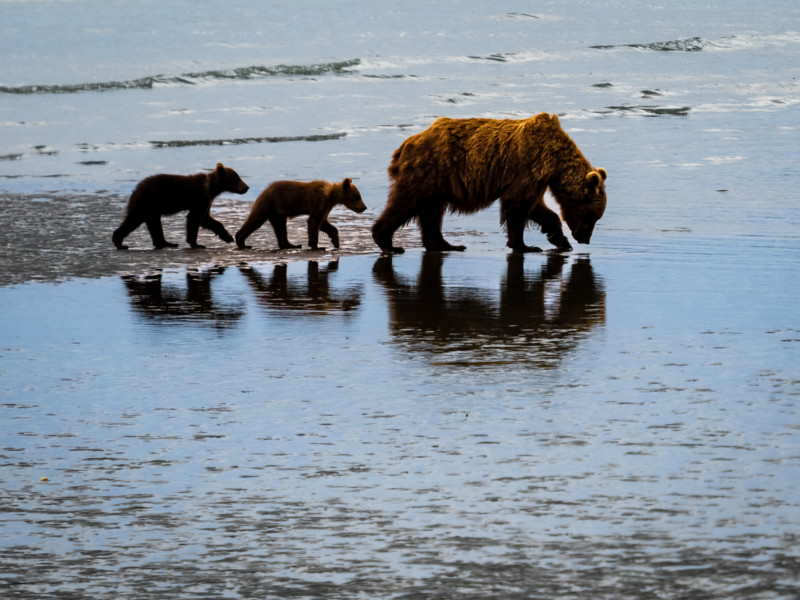
“There are opportunities to photograph bears on any Alaska trip, however, there is one trip that I have led for Lindblad Expeditions’ sister company, Natural Habitat Adventures, that has guests staying at a secluded bear camp close to Katmai National Park. We explore Kenai Fjords before ultimately arriving at what is considered the holy grail of Alaskan bear photography, Brooks Falls in Katmai National Park. Here, the bears stand in the water, atop the falls, and just simply wait until the salmon jump into their mouth. You have hours to explore different compositions while capturing the action sequences. Being that they aren’t that far, my OM-1 with the M.Zuiko ED 150-400mm F4.5 TC 1.25x IS PRO is more than enough to allow me to get a variety of storytelling photos.”
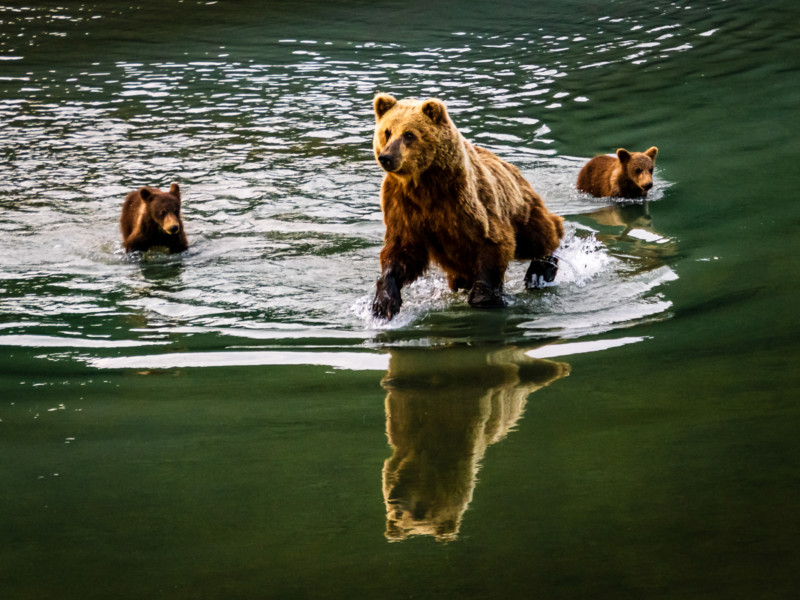
While bears are seemingly everywhere, they are still outnumbered by the bald eagle. There are estimated to be more than 30,000 bald eagles in Alaska, which makes finding them relatively easy if you know where to look, and the local Lindblad Expedition guides are experts at directing photographers to the locations where the bald eagles congregate.
Hopkins says that while photographing bald eagles, the best shots come from the birds in flight. “For me, no other bird looks as majestic in flight as bald eagles. The angle of their wings and the look of determination in their eyes is enchanting to witness and makes for incredible photographs.”
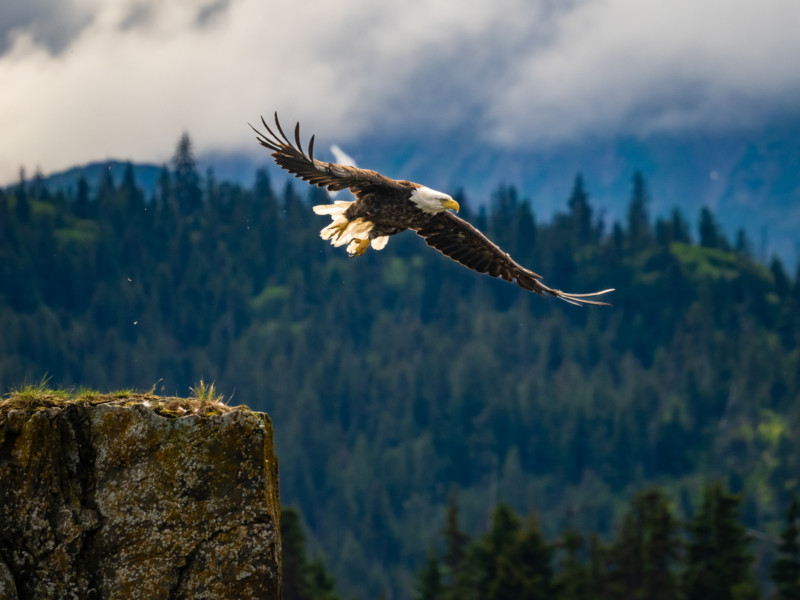
Utilizing the OM-1’s ProCapture Mode has only improved Hopkins’ photos of birds in flight, as he merely tracks his subjects until they take off. As long as he retains his focus and tracking, pressing the shutter button writes the previous sequence of photos to his memory card as RAW files.
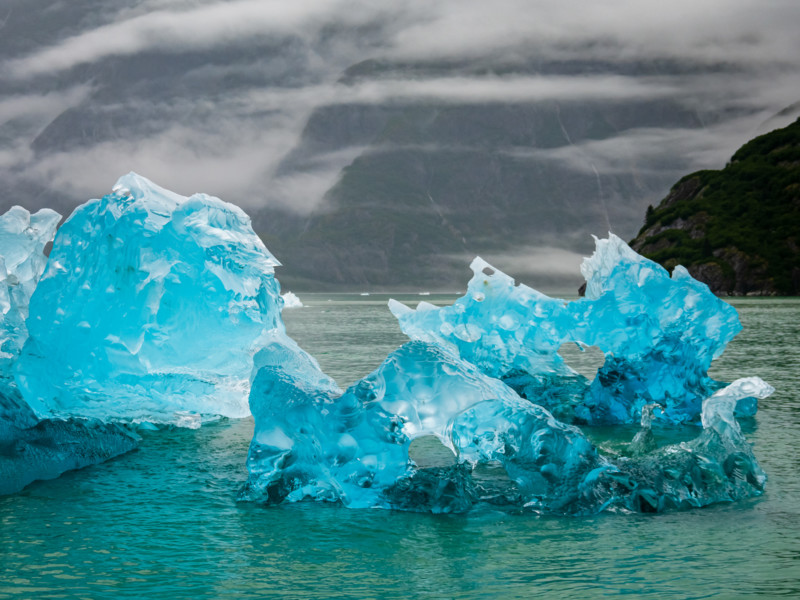
In his job as Lindblad Expeditions Director of Photography, Hopkins has traveled the world experiencing the landscapes, wildlife and people that most can only dream of.
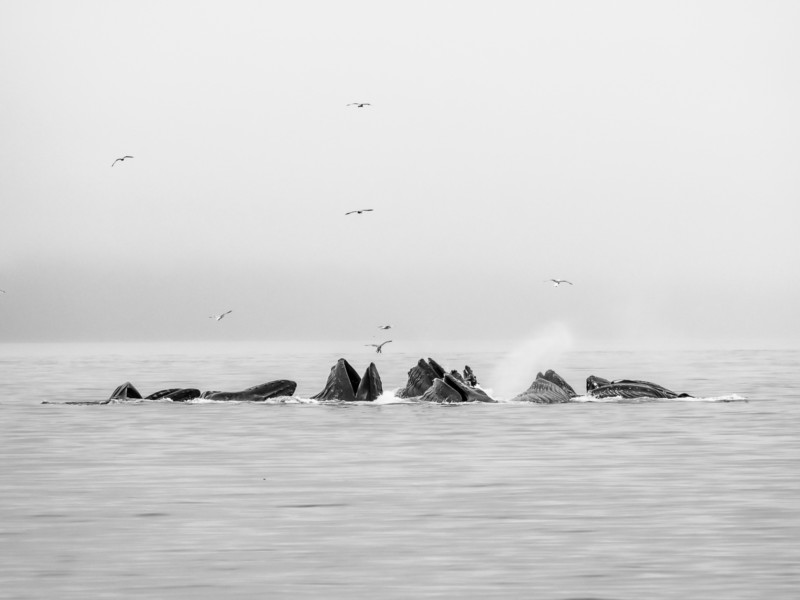
“It is not lost on me that I have one of the best jobs in the world,” Hopkins concludes. “The experiences that I have had with Lindblad Expeditions over these 33 years have been a dream come true. No matter how many times I have been on a certain expedition, I always feel the same excitement and awe that I did the very first time. To me, that’s what adventure travel is all about. The world is a big place, and inspiring experiences are unlimited if you know where to find them. Luckily for me, Lindblad Expeditions knows exactly where those experiences are.”
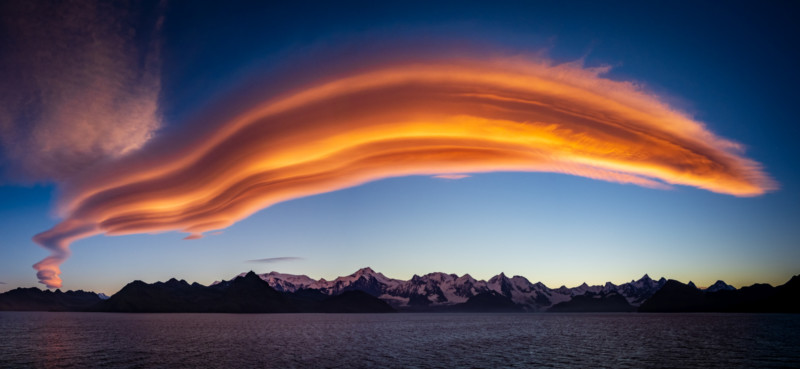
More from Ralph Lee Hopkins can be found on his website, and Instagram.
Image credits: All photos by Ralph Lee Hopkins.
Full disclosure: This article was brought to you by Lindblad Expeditions. Lindblad Expeditions is a global provider of small-ship expeditions and adventure travel experiences recognized as the category leader for its pioneering, cutting-edge programming and conservation commitment. Lindblad Expeditions works in partnership with National Geographic to inspire people to explore and care about the planet. The organizations work in tandem to produce innovative marine expedition programs and to promote conservation and sustainable tourism around the world. Guests interact with and learn from leading scientists, naturalists and researchers while discovering stunning natural environments, above and below the sea, through state-of-the-art exploration tools.
OM SYSTEM has partnered with Lindblad Expeditions to guide guests as they explore the world of adventure and document their journeys with the OM SYSTEM Photo Gear Locker, available aboard most Lindblad departures, offering courtesy loans of the latest OM SYSTEM camera bodies and PRO lenses.